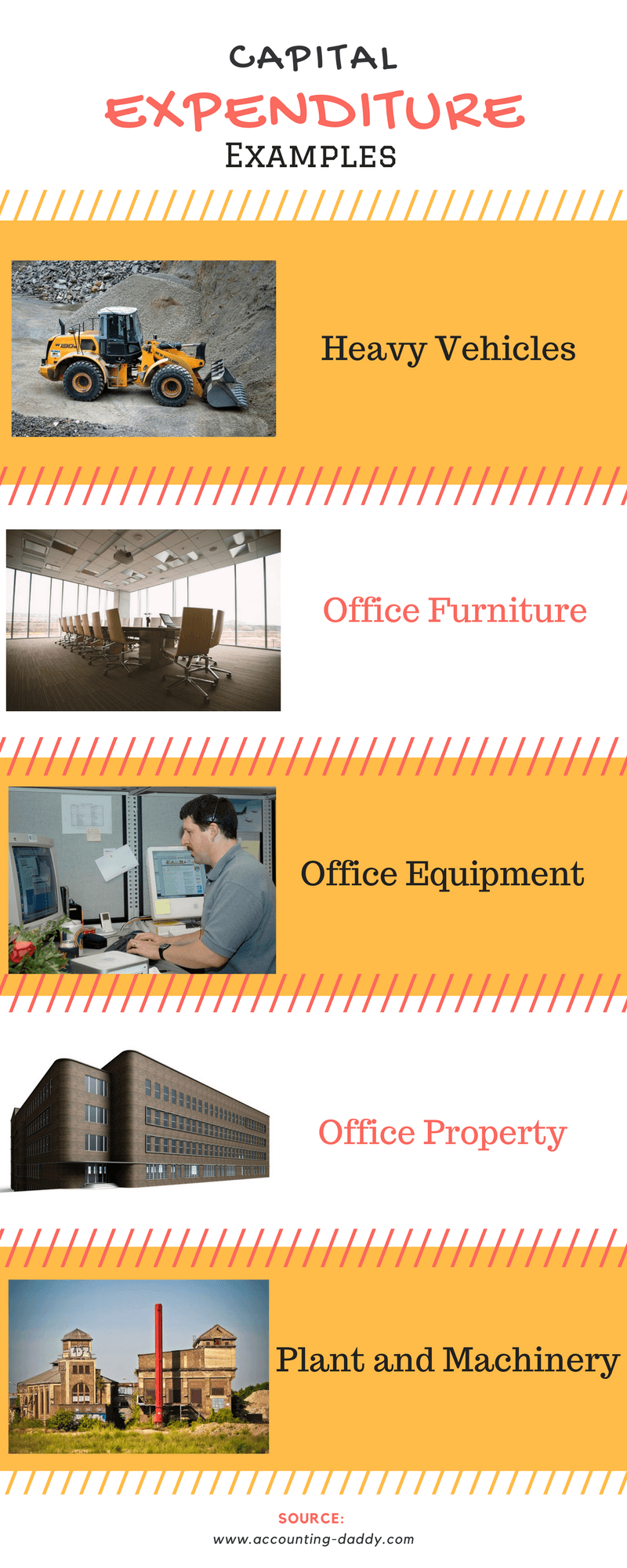|
|
Capital and Revenue Expenditure and Receipts.
Welcome to “Capital and Revenue Expenditure and Receipts” topic. Before we explore this part of accounting study material at Accounting-Daddy.com, let’s examine what Cambridge wants us to learn under this title at secondary education level:
As per the Cambridge syllabus specification:
Students should be able to:
- Define the meaning of Capital Expenditure, Revenue Expenditure, Capital Receipts and Revenue Receipts.
- Distinguish between Capital and Revenue Expenditure; Capital and Revenue Receipts.
- Account for Capital and Revenue Expenditure, Capital and Revenue Receipts.
- Calculate and comment on the effect on profit and asset valuation of the incorrect treatment of capital and/or revenue expenditure and capital and/or revenue receipts.
So here all our resources/revision materials are limited to the boundaries of the above syllabus. By the way, the above syllabus is sufficient enough to cover the same topic in Cambridge International AS and A Level Accounting (9706).
Let's explore this topic on Capital and Revenue Expenditure, Capital and Revenue Receipts.
Capital Expenditure
“The amount spent on buying non-current assets or adding value to existing non-current assets is known as capital expenditure.“
Check out the following examples to understand the above definition.
Eg: 1. The purchase of plant and equipment for business use. (Amount spent to buy a non-current asset)
2. The cost of changing interiors of the property to increase the seating capacity. (Amount spent to add value to an existing non-current asset)
In addition to the above, some of the following kind of spending is necessary to get non-current assets operational and some enhance the value of the non-current assets. Hence we should treat them as capital expenditure.
- Transport expenses (carriage) incurred to bring the non-current asset into the business after buying it.
- New wiring to provide power to the machinery.
- Amount spent towards the demolition of the property to construct a new property in the same place.
- Architect fee for property (Building) design.
- Legal costs associated with buying the property.
- Amount spent to acquire non-current assets.
Important points to remember:
- Capital expenditure enhances the value of non-current assets and subsequently total assets value.
- Business firms get benefited for several years from the capital expenditure. The main purpose of incurring capital expenditure is to increase the earning capacity of the business.
- Capital expenditure does not repeatedly occur in the same financial year. They are of non-recurring nature.
- Capital expenditure appears in the Statement of Financial Position of the business as a non-current asset.
Some more examples of Capital Expenditure:
- Purchase of Plant and Equipment for business use.
- Transport expenses (carriage) incurred to bring Plant and Equipment to the business premises.
- Expenses incurred to erect the Equipment in the business premises.
- Testing costs incurred to test the newly bought equipment.
- Click here for Capital Receipts.
Explore the other resources for Capital and Revenue Expenditure
- Multiple Choice questions on Capital Expenditure and Revenue Expenditure.
- Questions from 1 to 10.
- Questions from 11 to 20.
- Interactive Past Paper Multiple Choice Questions Practice: Set-1
2. Worksheet-1 : Capital and Revenue Expenditure
3. Worksheet-2 : Capital and Revenue Receipt
4. Effect of incorrect treatment of Capital and Revenue expenditure.
5. Capital and Revenue Expenditure - Scheme of work.
6. Capital and Revenue Expenditure - Past paper question listing.
Revenue Expenditure
“The amount spent on running the business on a day-to-day basis is known revenue expenditure.”
All the businesses incur various running expenses on a daily basis for the smooth functioning of its trading activities.
Check out the following examples to comprehend various running costs (Revenue Expenditure) incurred by the businesses.
- Payment of wages and salaries to the workforce.
- Payment of telephone, postage and other communication expenses.
- Payment of electricity and power bills.
- Payment of Insurance and Finance costs.
- Payment of repairs and maintenance expenses.
- Payment of advertising, promotion and selling expenses.
- Payments towards the purchase of inventory with an intention to resale.
- Payment of motor vehicle running expenses.
Important points to remember:
- Revenue expenditure increases the value of total expenses. Hence it reduces the profit for the year.
- The benefit received from the revenue expenditure gets used up in the same accounting year. Unlike Capital Expenditure, businesses do not get benefited for several years from revenue expenditure. (Click here to comprehend “Deferred Revenue Expenditure”, which is out of syllabus for GCE and IGCSE O Level Accounting students).
- Revenue expenditure is of recurring nature. Eg. The payment of salaries to the staff, repeats twelve times in an accounting year.
- Revenue expenditure appears in Income Statement. Due to the application of “Matching Concept”, revenue expenses are matched with the revenues of the same period in the Income Statement.
Some more examples of Revenue Expenditure
- Carriage on purchase returns.
- Legal costs incurred to collect the debts from trade receivables.
- Repairs to Business property.
- Redecoration of business premises to celebrate “May Day.”
- Replacement of electric bulbs in the factory.
- Click here for Revenue Receipts.
Explore the other resources for Capital and Revenue Expenditure
- Multiple Choice questions on Capital Expenditure and Revenue Expenditure.
- Questions from 1 to 10.
- Questions from 11 to 20.
- Interactive Past Paper Multiple Choice Questions Practice: Set-1
2. Worksheet-1 : Capital and Revenue Expenditure
3. Worksheet-2 : Capital and Revenue Receipts
4. Effect of incorrect treatment of Capital and Revenue expenditure.
5. Capital and Revenue Expenditure - Scheme of work.
6. Capital and Revenue Expenditure - Past paper question listing.
The differences between Capital and Revenue Expenditure.
| S.No | Capital Expenditure | Revenue Expenditure |
|---|---|---|
| 1. | It is an amount spent to buy a non-current asset. | It is an amount spent to meet the day to day running costs of the business. |
| 2. | Amount spent is normally high. | Amount spent is normally low. |
| 3. | It gives benefits to the business for an extended period. | The benefits received from the revenue expenditure by the businesses usually consumed in the same accounting year. |
| 4. | It is a non-recurring expenditure. | It is a recurring expenditure. |
| 5. | It is shown in the Statement of Financial Position. | It is shown in the Income Statement. |
- Click here for the difference between Capital Receipts and Revenue Receipts.
|
|






New! Comments
Have your say about what you just read! Leave us a comment in the box below.